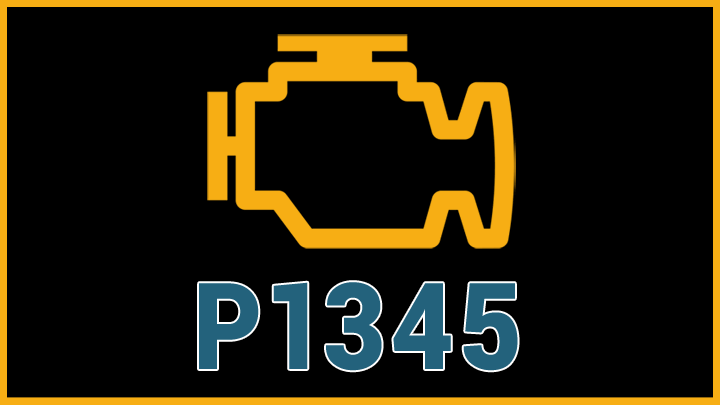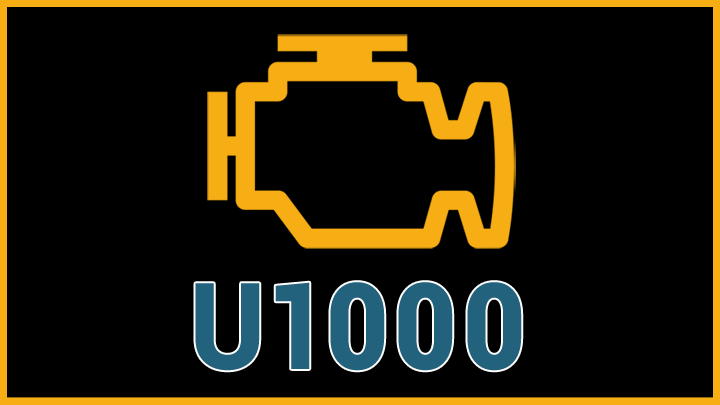Last Updated on September 3, 2021
Today’s vehicles rely heavily upon the use of highly intricate data transmission networks, in order to facilitate efficient operation. These networks allow each of a vehicle’s individual modules to communicate with one another, thereby streamlining the operation of multiple systems.
However, this technology can also prove valuable when a vehicle exhibits unusual symptoms, often associated with any number of mechanical or electrical issues. Any savvy motorist can tap into a vehicle’s OBD-II interface, with the use of a quality scan tool.
Doing so will provide you with a list of active fault codes, which can be used to assist you during the diagnostic procedure. While this, in itself, can be quite helpful, the root cause behind some particular fault codes are far from obvious.
One such DTC (diagnostic fault code) that often causes confusion is P1345. Though DTC P1345 is certainly indicative of an underlying issue, many DIY mechanics are left in question, when determining how to proceed.
Read on to learn more about the root cause of DTC P1345, as well as how to proceed should you face such concerns in the future.
What Does Code P1345 Mean?
Audi/VW: Ignition Amplifier - Short to Ground
Chevrolet/Buick/GMC/Cadillac: Crankshaft/Camshaft Position Correlation
Toyota/Lexus: Variable Valve Timing Sensor - Circuit Malfunction
Mazda: Camshaft Position Sensor - Signal Malfunction
Unlike many diagnostic trouble codes, fault code P1345 is not generic in nature. Quite the contrary, this DTC is manufacturer-specific, meaning that it is only recognized and used by certain makes and models of vehicles.
Furthermore, this code can represent slightly different conditions from one manufacturer to the next. DTC P1345 is a code used primarily by GM (Chevy, GMC, Cadillac, Buick), Audi/VW, Toyota/Lexus, Mazda, and Isuzu.
In any event, this code is used to indicate irregularities in timing, as indicated by data transmitted from an engine’s camshaft and crankshaft position sensors. In most cases, the vehicle’s ECM/PCM has determined that data being received from these sensors is irrational, in relation to that of its counterpart.
In essence, data relayed from an engine’s two main timing sensors (crankshaft and camshaft position sensors) is deemed to be contradictory.
While the crankshaft position sensor records the rotational speed of an engine’s crankshaft, the camshaft position sensor accounts for the articulation of a camshaft’s individual lobes. This information is vital when calculating proper fuel injection and ignition timing.
In the case of DTC P1345, a vehicle’s management software has determined that signals from these two sensors are not in agreement with one another. As a result engine efficiency often suffers.
DTC P1345 can also carry a slightly different meaning, in respect to other makes of vehicle. Toyota and Lexus specifies that fault code P1345 is indicative of a variable valve timing sensor-related issue, on the engine’s left-hand bank.
Alternatively, both Audi and Volkswagen state that DTC P1345 denotes a short to ground condition, within a vehicle’s ignition amplifier circuit.
Related: Code P0016, Code P0017
Symptoms of Code P1345
The exact symptoms associated with fault code P1345 often vary from one particular make and model to the next. However, a certain number of symptoms tend to be more prevalent, in the bulk of cases.
The following are the most common symptoms of DTC P1345.
- Engine Stalling
- Hard Starting
- Poor Idle
- Erratic/misfire at high RPM
- Check engine light
Causes of Code P1345

The exact cause of diagnostic trouble code P1345 can vary tremendously between vehicle makes and models. However, some causes tend to be far more common than others.
The following are several of the most common causes of DTC P1345.
- Faulty camshaft position sensor
- Faulty crankshaft position sensor
- Loose mounting hardware associated with timing sensor
- Improper engine timing
- Ignition Amplifier Circuit: Short to Ground (Audi/Volkswagen)
- Variable Valve Timing Sensor Issue: LH bank (Toyota/Lexus)
Is Code P1345 Serious?
In most instances, DTC P1345 is considered to be rather serious in nature. This is due to the fact that many of the symptoms associated with this code have the ability to negatively impact a vehicle’s drivability.
The most serious of these symptoms relate to stalling, which can be potentially hazardous, especially when attempting to drive with the natural flow of traffic.
In any event, the diagnosis and repair of DTC P1345 should not be delayed any longer than absolutely necessary. With time, symptoms associated with this code can grow in severity, thereby exasperating the issue at hand.
If you do not feel comfortable tackling such repairs on your own, or simply do not have time, consider scheduling an appointment with your local service center at the first available date.
How to Fix

Since diagnostic trouble code P1345 is manufacturer-specific in nature, repair procedures for this fault differ substantially from one vehicle to the next. However, the following steps will provide you with a general template for diagnosis.
#1 – Identify Additional Codes
Prior to beginning the diagnostic process, it is important to analyze any additional codes that are active. Carefully diagnose each of these additional codes, while carefully considering any correlation with DTC P1345.
#2 – Search For Pertinent Service Bulletins
It is also advisable to search for any available service bulletins addressing fault code P1345, as it pertains to your vehicle. Such service bulletins, if present, will likely point you in the direction of your vehicle’s underlying issue.
#3 – Perform Thorough Visual Inspection
It will now be necessary to perform a thorough visual inspection, of all which corresponds to the engine’s timing sensor circuits. Carefully check both the camshaft and crankshaft position sensor, as well as the wiring associated with each. Make sure that both sensors are securely mounted, and all wiring connections are tight.
#4 – Consult Factory Service Literature
If no obvious issues have been uncovered, vehicle-specific service literature should be consulted. Doing so will provide you with step-by-step directions for diagnosis of the issue at hand, as specified by your vehicle’s manufacturer.




